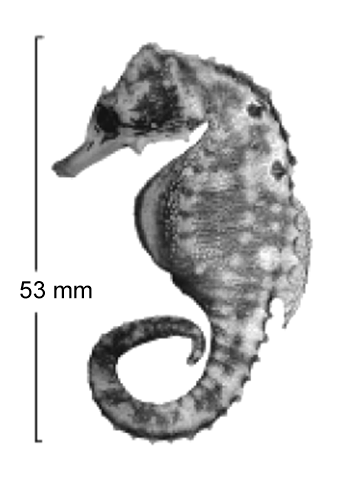| Syngnathidae (Pipefishes and seahorses), subfamily: Syngnathinae |
| 10.8 cm OT (male/unsexed) |
|
demersal; marine; depth range 0 - 20 m, non-migratory |
| Eastern Indian Ocean: Western Australia. (Shark Bay and Exmouth Gulf). |
|
Dorsal spines (total): 0-0; Dorsal soft rays (total): 22-23; Anal spines: 0-0; Anal soft rays: 4-5. Anal fin rays divided at base; tail rings 36-38; subdorsal spines 4/0,0,1,1 or 5/0,0,1,1,1; nose ridge slightly raised, without a spine; spine above eyes moderately large, angled back and laterally outward; lateral head spine moderately large and recurved; coronet slightly raised, apex with 5 blunt diverging spines; upper shoulder-ring spine of small to moderate size, situated beside gill openings; central shoulder-ring spine of moderate size and directed laterally outward; superior trunk and tail ridges with broad thorn-like blunt spines, enlarged on some rings, at regular intervals; superior tail ridge with tubercle-like spines of moderate size, angled backward; trunk ridges followed by connecting tail ridges with spines and tubercles becoming gradually smaller posteriorly; lateral line with distinct pores, on trunk rings just above lateral ridge, continuing onto tail to 18th-23rd tail ring, each pore between raised papillae (Ref. 42735). |
| Adults inhabit shallow algae or weedy reef areas from the intertidal to about 20 m depth (Ref. 42735). Maximum length is based on a straight-line length measurement from upper surface (ignoring spines) of first trunk ring, to tip of tail (Ref. 42735). Ovoviviparous (Ref. 205). The male carries the eggs in a brood pouch which is found under the tail (Ref. 205). |
|
Least Concern (LC); Date assessed: 05 October 2016 Ref. (130435)
|
| harmless |
Source and more info: www.fishbase.org. For personal, classroom, and other internal use only. Not for publication.
